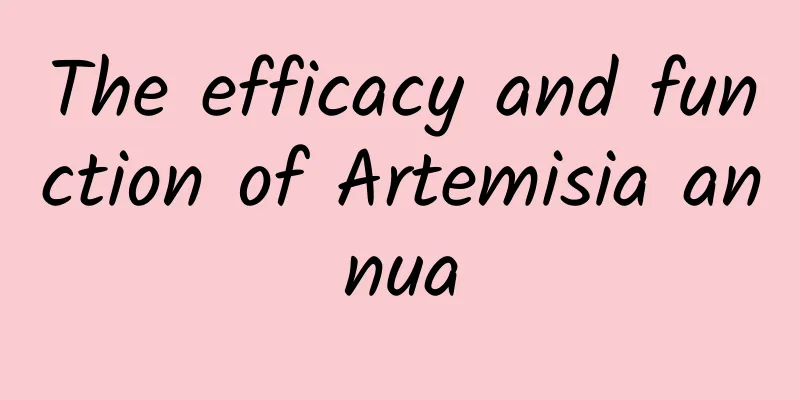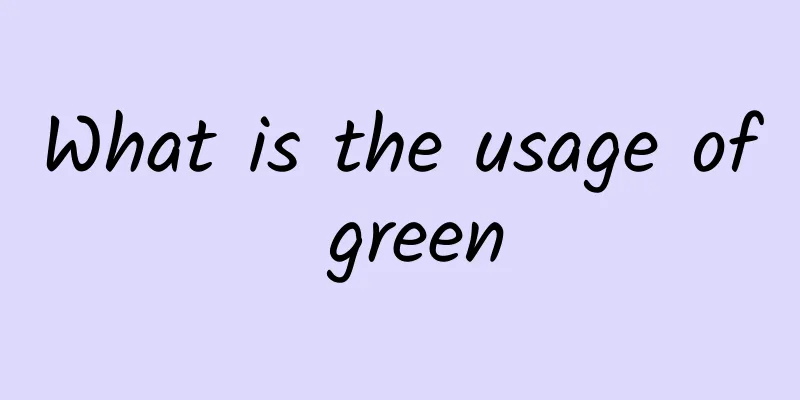The efficacy and function of Artemisia annua

|
After thousands of years of sedimentation and accumulation, the types and quantities of Chinese medicine have become quite astonishing. Therefore, choosing Chinese medicine to treat some difficult and complicated diseases always has a very good effect. Next, I would like to recommend a Chinese medicine, Artemisia annua. [Alias] Stinky wormwood, Artemisia selengensis (Rihuazi Materia Medica), Fragrant silk grass, Wine cake grass (Flora of Guangzhou), Horse urine wormwood, Artemisia absinthium (Guizhou Folk Prescriptions Collection), Yellow fragrant wormwood, Artemisia yellow, Wild tube wormwood (Jiangsu Plant Medicine Records), Chicken lice grass (Jiangxi Herbal Medicine), Autumn wormwood, Fragrant bitter grass, Wild bitter grass (Shanghai Commonly Used Chinese Herbal Medicines). [Source] It is the whole herb of Artemisia annua, a plant of the Asteraceae family. Cut in autumn, sun-dried or cut into sections and sun-dried. [Original form] Annual herb, up to 1.5 meters tall, almost glabrous overall. The stem is erect, cylindrical, with shallow longitudinal grooves on the surface. It is green when young and turns yellow when old. The lower part is woody and the upper part is multi-branched. The stems and leaves are alternate; pinnately lobed 3 times, with pointed lobes, green above and yellow-green below, with narrow wings on both sides of the rachis. The leaves on the upper part of the stem gradually become smaller and more finely divided upwards. The inflorescence capitula is spherical, drooping, arranged in a pyramidal panicle with leaves, almost densely distributed on the upper part of the plant body; each inflorescence capitula has a short pedicel, with or without linear bracts at the base; the involucre is smooth and hairless, with 2 to 3 layers of bracts, the central part of the back is green, the edges are light yellow, membranous and transparent; the receptacle is rectangular, the flowers are all tubular, yellow, the outer ones are female flowers, with only one pistil; the center is a bisexual flower, the corolla has 5 lobes at the apex, 5 stamens, fused anthers, thin and short filaments, attached to the middle of the inner surface of the corolla tube, 1 pistil, filiform style, stigma is 2-lobed, forked. Achenes are ovate, tiny, light brown, with raised longitudinal stripes on the surface. Flowering period is from August to October. The fruiting period is from October to November. [Habitat distribution] Grown in wilderness, hillsides, roadsides and river banks. Distributed almost all over the country. It is produced in most parts of the country. [Properties] The dried whole herb is about 60 to 100 cm long. The stem is cylindrical, light brown or gray-brown on the surface, with longitudinal ridges, hard, rough broken surface, and white pith in the center. The young branches have many leaves, are brittle and easy to break. The leaves of branches with fruit clusters or inflorescences have mostly fallen off, and only small spherical brown-yellow bracts remain in the inflorescence, which are like fish roe and are brittle and easily broken. It has a unique aroma, bitter taste and a cooling feeling. The best ones are yellow-green in color, fragrant and free of impurities. [Chemical composition] The air-dried plant contains 9.7% water, 5.6% ether soluble matter, 26.6% water soluble matter, 0.8% ethanol soluble matter, 11.6% hemicellulose, 8.5% cellulose, 9.6% lignin, 9.3% protein, 10.1% ash and 2.4% tannins. 【Properties and flavors】 ① "Compendium of Materia Medica": "bitter, cool, non-toxic." 【Functions and indications】 Clears away heat and relieves malaria, dispels wind and relieves itching. Treat heatstroke and malaria. Hot flashes, infantile convulsions, febrile diarrhea, malignant sores and scabies. [Usage and Dosage] For oral use: decoct in water, 1 to 3 qian. For external use: mash and apply. [Additional prescription] ① Treat hot flashes, night sweats and indigestion caused by tuberculosis: 2 to 4 grams of Artemisia annua. Decoction in water. (Guangzhou Army "Handbook of Commonly Used Chinese Herbal Medicines") [Remarks] This product is currently used as Artemisia annua in most parts of the country. See the entry for Artemisia annua. 【Excerpt】 《*Dictionary》 Through the above introduction, everyone has a good understanding of the traditional Chinese medicine Artemisia annua. It has a very good effect in treating diseases. However, it should be noted that when using Artemisia annua, some methods and techniques should be mastered to consume it in a healthy and scientific manner. |
<<: The efficacy and function of Sophora japonica
>>: The efficacy and function of yellow flower garlic
Recommend
The efficacy and function of the predictor
Xuzhizi is a traditional Chinese medicine. In add...
The efficacy and action points of cinnamon twig
Cassia twig is the dried branch of cinnamon, a sh...
Red alert! Typhoon Makar will land here, how should we respond?
As Typhoon Makar is about to land, Hainan raises ...
What are the benefits of loquat root?
Everyone knows about the loquat fruit. Even if yo...
The efficacy and function of Artemisia argyi
Artemisia annua, also known as: Artemisia selenge...
Can saffron cure gynecological diseases?
Female friends cannot escape the fate of gynecolo...
The efficacy and function of radix scutellariae
Vermicelli root is a commonly used medicinal mate...
Do you feel tired after taking Chinese medicine?
In recent years, the domestic admiration for trad...
What are the effects and functions of cinnamon powder
We often use cinnamon and other spices as seasoni...
The efficacy and function of wind wheel vegetable
The medical value of Carthamus tinctorius is beyo...
The efficacy and function of yew
Yew is a very precious first-class protected plan...
Those people are not suitable to eat Korean ginseng
In daily life, there are many Chinese herbal plan...
What is the effect of bitter girl?
Bitter girl is a kind of plant Chinese medicine, ...
Where is New Horizons? Does it also carry the coordinates of the Earth? Will it attract alien abduction?
Many people have been exclaiming that we should n...
The efficacy and function of Zishi
Zizishi is a traditional Chinese medicine. In add...









